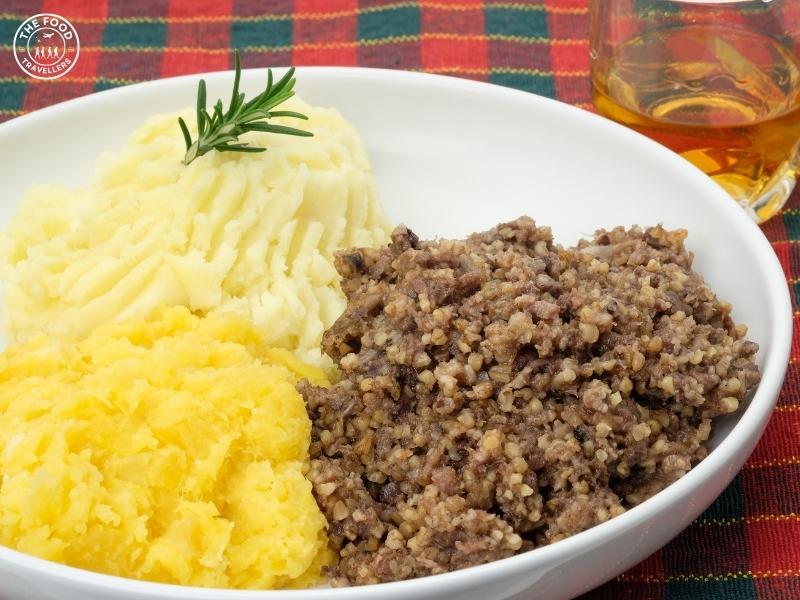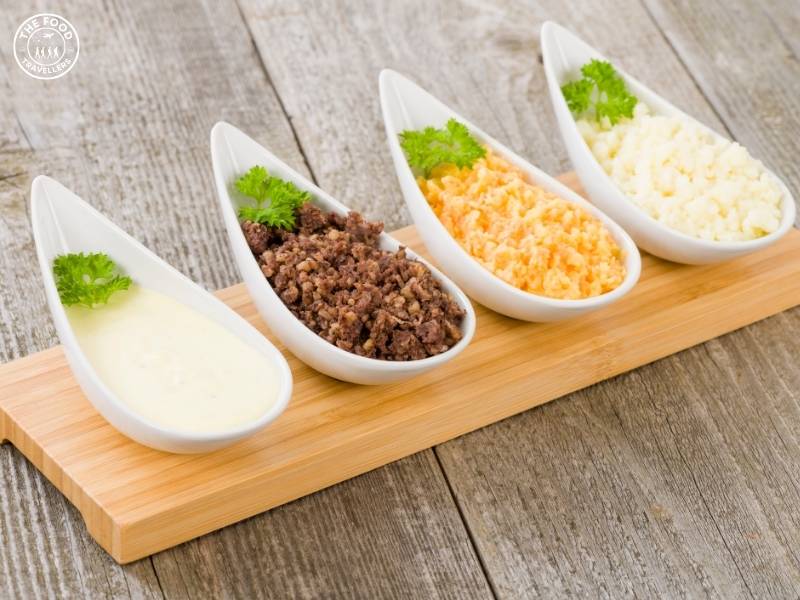A Creative Alternative to the Traditional Scottish Dish
Haggis is Scotland’s national dish. It is the representation of a dish with a great and robust character. Traditionally, it is a sheep’s offal, oatmeal, and spices dish representing the Scottish cultural and identity elements for ages. Contemporary dietary preferences as well as living a plant-based lifestyle have necessitated the evolving concept of vegan haggis. This blog post delves into the story of haggis, discussing its origins and cultural significance. The evolution of vegan haggis and what it stands for-a bridge between traditional and modern perspectives in global cuisines-will also be elaborated here.
Origins of Haggis
A Recipe Born of Necessity
Its roots trace back to ancient times when historians have their origins tracing in early Scotland, and even far afield, it was once a practical meal made to make use of parts of an animal after slaughter. Sheep’s heart, liver, and lungs minced and mixed with oats, onions, and spices, enclosed within the stomach of an animal, were boiled. With all these economical usages of ingredients, it was used as a staple for Scottish farmers and in other rural communities.
Name and Early References
The name “haggis” probably came from the Old Norse word “höggva,” to chop or hew, based on how the meal is prepared. The first references in Scottish literature were in the 15th century, but it became truly legendary in 1786 with Robert Burns’ address to a Haggis as Scotland’s national poet. He celebrated the meal as a manifestation of Scottish spirit, social community, and nationalism.
Cultural Significance of Haggis
A Product of Scotland
Haggis is more than a recipe. It is Scotland’s traditional and cultural contribution. Burns Suppers, which are staged on January 25th to commemorate the birthday of Robert Burns, focus on the celebration by commemorating the bagpipe music, poem recitation, and mock presentation of the haggis.
Plain but Original
Haggis is, basically the most culinarily practical example of great resourcefulness of Scottish people, taking the lowest of the ingredients to produce the finest meal. Its culinary ingenuity personifies creativity, making ordinary parts magical. The popularity of this dish reflects thrift, community and land-based connections.
Development of Vegan Haggis
Contemporary Demands
Traditional recipes are being modified to accommodate modern tastes and morals, and plant-based diets are gaining in popularity. Vegan haggis replicates the hearty spiced flavors of its original counterpart using plant-based ingredients. The adaptation makes it accessible to vegans, vegetarians, and individuals looking for sustainable alternatives.
Core Ingredients of Vegan Haggis
Vegan haggis substitutes offal with a mixture of lentils, mushrooms, oats, and nuts to mimic the texture and umami flavors of the original. Spices such as black pepper, nutmeg, and coriander retain the characteristic taste of traditional haggis.
Recipe for creating Vegan Haggis at home:
Ingredients for Proteins and Base:
- Green or brown lentils – 1 cup, cooked
- Mushrooms – 1 cup, finely chopped
Grains and Fillers:
- Steel-cut oats – ½ cup
- Walnuts or sunflower seeds – ½ cup, chopped
- Breadcrumbs – ½ cup
Vegetables:
- Onion – 1, finely chopped
- Carrot – 1, grated
- Celery – 1 stalk, finely chopped
Spices and Seasonings:
- Ground coriander – 1 teaspoon
- Nutmeg – ½ teaspoon
- Black pepper – 1 teaspoon
Salt – to taste - Fresh thyme – 1 teaspoon, chopped
Liquid and Flavor Enhancers:
- Vegetable stock – ½ cup
- Soy sauce – 1 tablespoon
- Olive oil – 2 tablespoons
Preparation Time
- Prep Time: 20 minutes
- Cook Time: 45 minutes
- Total Time: 1 hour 5 minutes
Step-by-Step Instructions
Prepare the Ingredients:
- Boil lentils according to package instructions; set aside
- Chop mushrooms, onion, carrot and celery
- Toasting oats: place a dry skillet over heat until lightly golden and aromatic
- Sauté the Vegetables
- Heat the olive oil in a large skillet over medium
- Add onions, carrots, and celery; sauté until they are soft
- Add the mushrooms; stir into the pan, cooking until they release moisture and start browning
- Mix in the Combination
- Add lentils, toasted oats, walnuts, and breadcrumbs to the pan.
- Add spices, thyme, soy sauce, and vegetable stock.
- Mix until it is well incorporated and holds together.
Shape and Bake:
- Preheat oven to 375°F (190°C).
- Transfer mixture to a greased loaf tin or shape into individual patties.
- Bake for 30–35 minutes, until firm and lightly browned.
Serve:
Vegan haggis is often served with mashed potatoes (tatties), mashed turnips (neeps), and vegan gravy. Fresh parsley adds a festive touch to the dish.
Vegan Haggis in Modern Cuisine
A Celebration of Sustainability
This vegan haggis shows the principles of sustainability because it minimizes dependence on animal products. The use of lentils, nuts, and oats keeps eco-friendly eating practices alive in the celebration of Scotland’s culinary heritage.
Versatility and Creativity
This plant-based version has incited experimentation from chefs to home cooks. Vegan haggis-stuffed mushrooms, haggis burgers, and filo parcels show the versatility with which the dish has crossed beyond its traditional confines.
Bridging Cultures
Vegan haggis has now become a worldwide phenomenon, appreciated by the world’s taste buds for its flavors and ethical value. It explains how traditional recipes can be altered to suit any culinary needs.
Cultural Representation and Global Appeal
A Meal That Brings Together
Vegetarian haggis is inclusive, whereby an individual belonging to different diet groups can have a chance to participate in one of Scotland’s finest traditions. It demonstrates how culture can bend and how a tradition that dates back to time immemorial can be kept with change.
An Ethical and Modern Alternative
Growing health-conscious, eco-friendly, and compassionate citizens call for innovation in food, which is vegan haggis: retaining the original spirit but modern in values regarding health, sustainability, and compassion.
Conclusion
Vegan haggis is proof of how food can change yet still retain its cultural identity. This reinvention of Scotland’s national dish for the taste buds of modern people has combined tradition with innovation. Whether from a Burns Supper or simply a simple dish, vegan haggis exemplifies the ethos of Scotland regarding the rise of the whole world of veganism. In turn, everybody can get the taste pleasure of haggis, innovation by the visionary past.
Share your thoughts on our Instagram Channel @thefood.travellers



